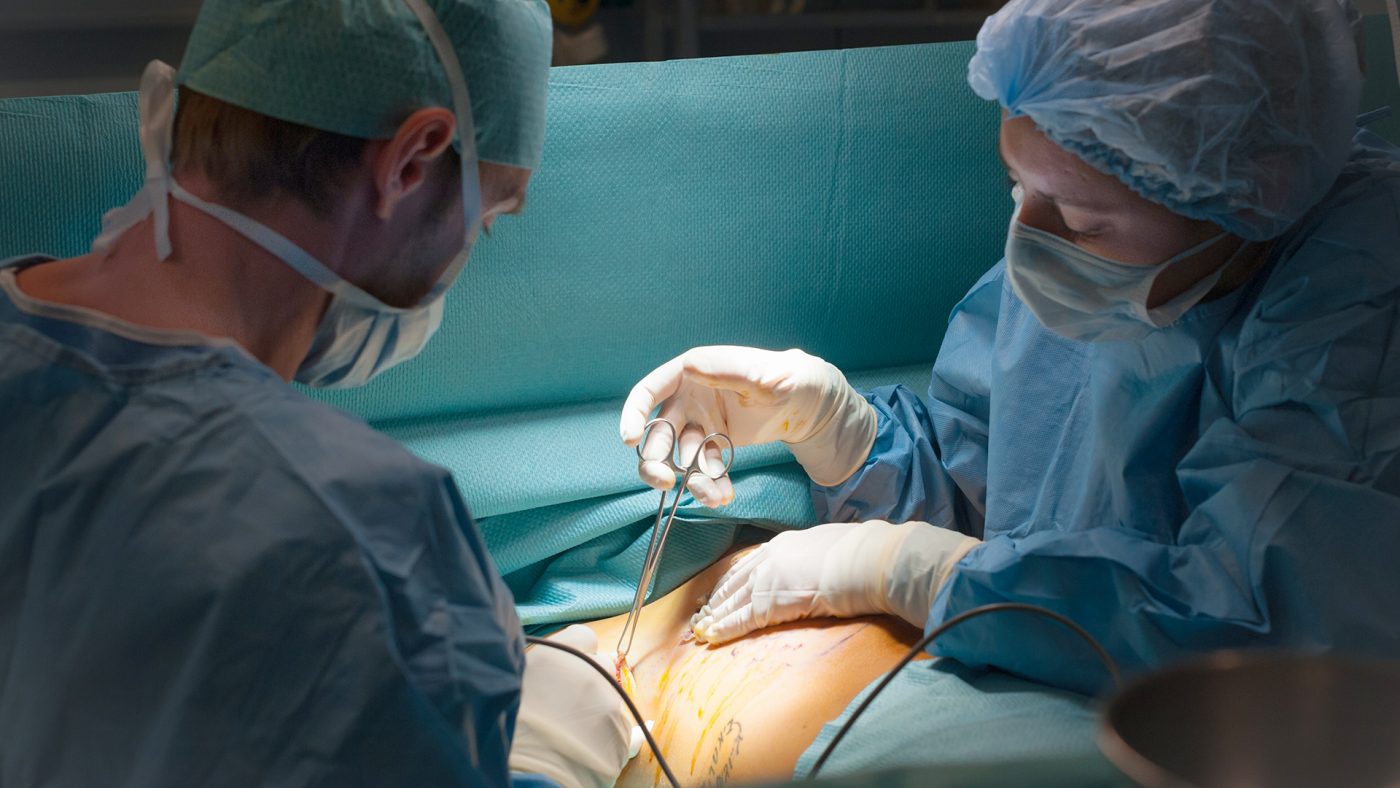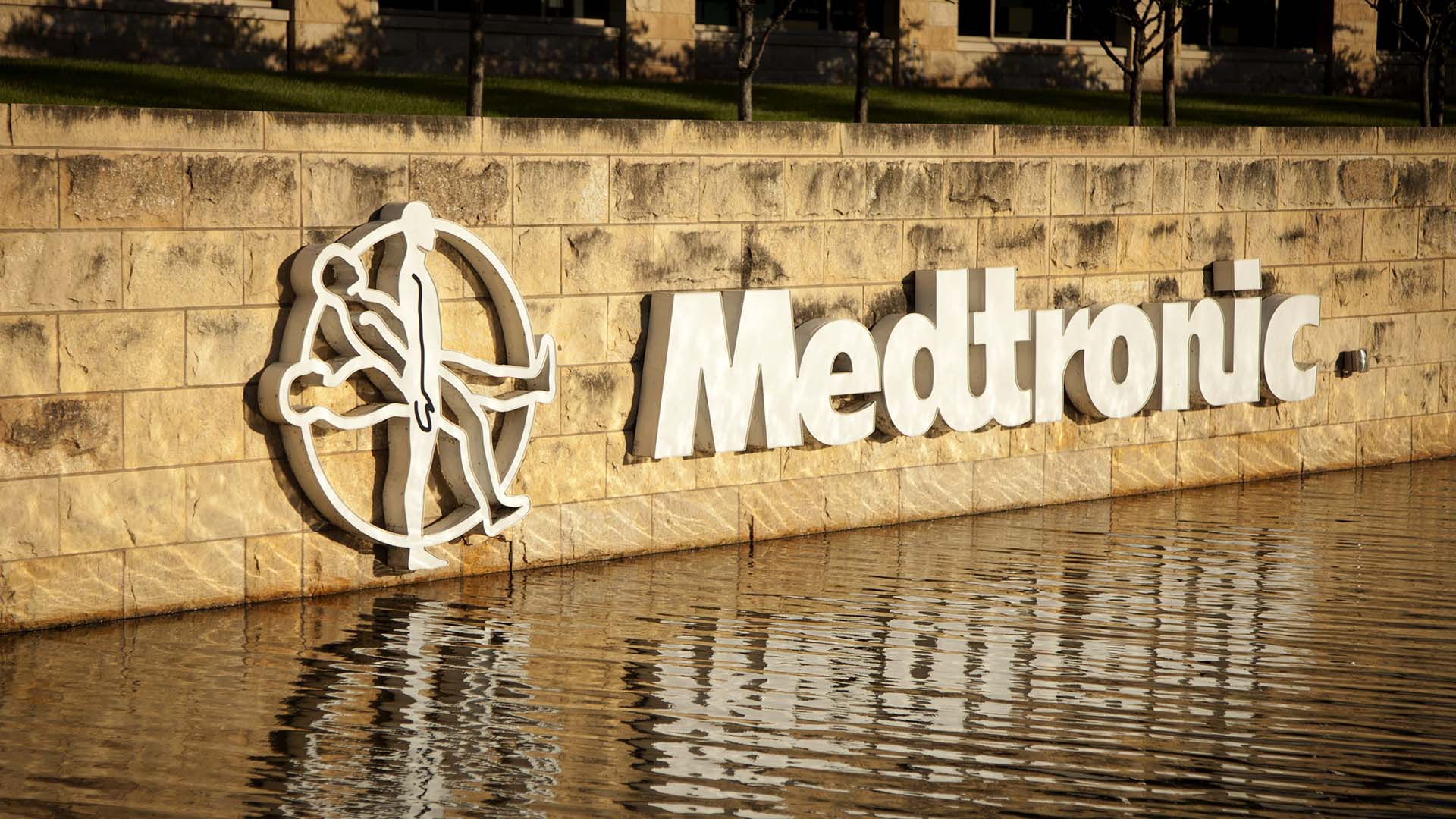The Implant Files is a globe-spanning investigation revealing a broken system that allows flawed medical devices to go onto the market — and into our bodies.
Involving more than 250 reporters in 36 countries, ICIJ and its partners spoke with hundreds of patients about the system’s pitfalls.
There are countless medical implant success stories to celebrate. But the public is often the last to know about potentially dangerous malfunctions tied to implants.
We hope that this resource will arm readers with information that makes informed decisions about medical devices easier.
We will add to this resource whenever necessary. If you think we’ve missed something, or have erred in any way, we welcome your feedback. Please send it to Amy Wilson-Chapman, ICIJ’s community engagement editor: awilsonchapman@icij.org
Medical devices have helped to diagnose, prevent and treat various injuries and diseases. This resource is not intended to provide medical advice, and patients should check with their doctors to determine if it contains relevant information and if such information has medical implications for them.
Special thanks to the following professionals who contributed to this resource: Dr. Anand Deva, a cosmetic and plastic surgeon from Macquarie University in Australia; Dr. Carl Heneghan, professor of evidence-based medicine at Oxford University in London; Diana Zuckerman, president of the National Center for Health Research in the U.S.; Dr. Hanifa Koya, gynecologist at Wakefield Hospital in Wellington, New Zealand, Jeanne Lenzer, U.S. based author of The Danger Within Us; Angie Firmalino, president of Advocating Safety in Healthcare, E-Sisters, and Madris Tomes, founder and chief executive of U.S. based Device Events.
What is an implant?
An implant is a medical device that is put inside or on the surface of the body. Implants may replace body parts, such as hips; deliver medication; monitor body functions; or support organs and tissues.
ICIJ and partners decided to call this investigation the Implant Files because we focused our attention on these implantable medical devices. This refers to a medical device that goes under the skin or inside the body.
What is a medical device?
There’s no simple answer, and different countries have different definitions. It’s a broad category that ranges from tongue depressors and elastic bandages to pumps for pain or insulin, some types of birth control, robotic surgery equipment and sophisticated heart pacemakers. Medical devices can be used to diagnose, prevent, monitor, treat or alleviate disease or injury but can also replace, modify or support various parts of bodies, such as knees or hips. They can support, sustain and improve life.
What the category doesn’t include is drugs, which have to meet a stricter set of regulations.
For a more detailed explanation here is how World Health Organization defines a medical device.
Do all medical devices have problems?
No. For example, pacemakers and implantable cardioverter defibrillators (ICDs) have revitalized and saved millions of lives. Hip and knee replacements have kept tens of millions of people mobile and out of wheelchairs. Intraocular lenses have restored and improved the sight of millions more.
At the same time, devices sometimes malfunction, often with gruesome consequences. Our analysis identified more than 1.7 million injuries and nearly 83,000 deaths potentially linked to devices reported to U.S. regulators over a 10-year period. This count was not definitive, as not all malfunctions, deaths and injuries are reported.
I found my device in your database. What should I do now?
Do not assume there is a problem with your device because you found it in the International Medical Devices Database (IMDD). If you are concerned, you should contact the surgeon who performed your operation or your primary care doctor.
The IMDD is a collection of recalls, safety alerts and safety notices from 11 countries. Less than 20 percent of the world’s countries report data on devices to the public, including whether devices have been recalled.
What should I ask my doctor if she suggests I get an implant?
You should treat this like any surgery: weigh your options and understand what the surgery entails. Three good questions, suggested by Angie Firmalino, president of Advocating Safety in Healthcare, E-Sisters, to ask your doctor, before deciding to go ahead are:
- How many of these medical procedures have you done?
- Have any of your patients had problems with this device? If yes, what were they?
- Have you been able to remove the device if something went wrong? What is the removal protocol?
Remember, you can always get a second (or a third) opinion.
I am considering getting a device. What should I research?
The more informed you can be about a medical device, the better. Some good questions to get you started include:
- Who has studied the device? Has it been tested in scientific studies?
- What are the long-term effects of the device? (Look at the number of people it was tested on and how long their effects were monitored.)
- How long has the device been on the market?
- Is there an alternative?
- Can the device be removed if something goes wrong?
- Has the device been recalled? (You can use our International Medical Devices Database to search for this, as well as your local regulator — see below. Even if you live outside the
- U.S., the U.S. Food and Drug Administration’s website can often be a valuable resource.)
I have an implant, and I’m worried there is a problem. What should I do?
Your first point of call should be the medical team that performed the operation. If you cannot go back to them for whatever reason, you should consult your primary care doctor. The doctor should be able to refer you to a specialist who is familiar with the device and the surgery you had.
My medical device is having a negative effect on my health. How do I report it?
If you live in the U.S., the FDA relies on the voluntary reporting of problems by patients, as well as mandatory reports by manufacturers. To submit a report, go to the FDA’s website. There is a helpful guide on how to make a report.
Outside of the U.S., you should contact your local regulator (the Therapeutic Goods Administration in Australia, or the Medicines and Healthcare products Regulatory Agency, for example) and ask the regulator how to report the negative effect.
Not sure who oversees medical devices in your country? Use the World Health Organization’s Global Atlas of medical devices to find out.
How do I know if my device has been recalled?
Search the International Medical Devices Database to see if the device has been recalled. Remember that this database does not contain information from every country. To find out which countries it includes, check here. Even if your country is not listed, you might be able to see if the device in question was distributed there at some point.
If you want country-specific information, you should contact your local regulator using WHO’s medical device atlas. We have provided a list of agencies below as well.
The FDA’s website contains a lot of information about specific devices, but remember it is U.S. focused.
How do I know if an implant is safe?
Research and information is the only way to know if an implant is safe. It’s crucial to do your own independent research.
If there are clinical studies, consider their extent: how many patients did they follow? For how long? How were people affected by the side effects of the device? How did that change over a longer period of time?
Make sure you understand the side effects of the implant and how they may change over time. Does it get worse or better?
Discuss all information with your doctor (as well as trusted friends and family) and seek out people who have had the same implant to find out about their experience.
If something goes wrong, I can just get the device removed, right?
Not necessarily. Do not assume an implanted device can be removed. There are many cases when removing a faulty implant is more dangerous than leaving it in.
That makes it important to ask when you are considering an implant: how will this be removed, or undone, if something goes wrong?
How do I know if my doctor or surgeon has a stake in the medical device they are urging me to use?
If you’re in the U.S., you can search for your doctor in the Center for Medicare & Medicaid Payments database. This database includes payments that include speaking, consulting, meals, travel and royalties to medical doctors, dentists, osteopaths, optometrists, podiatrists and chiropractors.
What is the CE mark?
‘CE’ stands for “Conformité Européenne. This is the identifying logo on packaging or instructions included with a range of products – including medical devices, toasters, children’s toys and fireworks. It means the products meet “high safety, health and environmental protection requirements”.
I am thinking about getting a breast implant, where can I find the more information?
There are several websites for women considering breast implants.
- Saferbreastimplants.org offers a list of surgeons (mainly based in the United States, Australian and New Zealand) who have pledged to adopt a sterile technique
- The U.S.-based think tank, the National Center for Health Research, has an FAQ specifically for breast implants.
- It also offers a comprehensive list of What You Need to Know About Breast Implants that addresses a range of risks.
- The National Center for Health Research also suggests you consider these nine points beforehand.
I think I have one of the metal-on-metal hips featured in your reporting. What should I do now?
If you have any concerns, you should contact the orthopedic surgeon who performed your surgery. The FDA suggests that anyone who has “hip/groin pain, noise, difficulty walking or a worsening of your previous symptoms” should contact the orthopedic surgeon right away.
For more information, please consult your doctor, or you can read the FDA’s advice on the topic.
Finding the device regulator in your country
- Afghanistan – General Directorate Pharmaceutical Affairs, Ministry of Public Health
- Albania – National Agency for Drugs and Medical Devices (AKBPM)
- Algeria – Direction de la Pharmacie et du Medicament, Ministere de la Sante, de la Population et de la Reforme
- Andorra – No regulatory agency
- Angola – Direcção Nacional de Medicamentos e Equipamentos
- Antigua and Barbuda – No regulatory agency
- Argentina – Direccion de Tecnologia Medica, Administracion National de Medicamentos, Alimentos y Tecnologia Médico (ANMAT)
- Armenia – No regulatory agency
- Australia – Australian Therapeutic Goods Administration (TGA)
- Austria – Austrian Medicines and Medical Devices Agency
- Azerbaijan – CSEEA Analytical Expertise Centre
- Bahamas – No regulatory agency
- Bahrain – Pharmaceutical Product Regulatory Office, National Health Regulatory Authority
- Bangladesh – Directorate General of Drug Administration
- Barbados – No regulatory agency
- Belarus – Department of Medical Equipment, Logistical Support, and Construction, Ministry of Health
- Belgium – Health Products Division, Agence Fédérale des Médicaments et des Produits de Santé (AFMPS)
- Belize – No regulatory agency
- Benin – No regulatory agency
- Bhutan – Drug Regulatory Authority
- Bolivia – Unidad de Medicamentos y Technologia en Salud
- Bosnia and Herzegovina – Agency for Medicinal Products and Medical Devices
- Botswana – No regulatory agency
- Brazil – Brazilian Health Surveillance Agency
- Brunei – No regulatory agency
- Bulgaria – Bulgarian Drug Agency (BDA)
- Burkina Faso – Direction générale de la pharmacie, du médicament et des laboratoires
- Burundi – Department of Pharmacy, Medicines and Laboratories (DPML), Ministry of Health
- Cambodia – No regulatory agency
- Cameroon – Direction de la Pharmacie, du Medicament et de Laboratoires.
- Canada – Health Canada, Health Products and Food Branch, Therapeutic Products Directorate, Medical Devices Bureau
- Cape Verde – Agency of Regulation and Supervision of Pharmaceutical and Food Products (ARFA)
- Central African Republic – No regulatory agency
- Chad – No known regulatory agency
- Chile – Subdepartmento de Dispositivos Médicos, Instituto de Salud Publica
- China – China Food and Drug Administration
- Colombia – National Food and Drug Surveillance Institute (Instituto Nacional de Vigilancia de Medicamentos y Alimentos) (INVIMA)
- Comoros – No regulatory agency
- Congo – No regulatory agency
- Cook Islands – No regulatory agency
- Costa Rica – Ministerio de Salud
- Cote d’Ivoire – No regulatory agency
- Croatia – Agency for Medicinal Products and Medical Devices (HALMED)
- Cuba – Centro para el Control Estatal de Medicamentos, Equipos y Dispositivos Medicos (CECMED)
- Cyprus – Cyprus Medical Devices Competent Authority
- Czech Republic – Ministry of Health – State Institute for Drug Control
- Democratic Republic of the Congo – La Direction des laboratoires de Santé /Ministère de la Santé
- Denmark – Danish Medicines Agency
- Djibouti – No regulatory agency
- Dominica – No regulatory agency
- Dominican Republic – No regulatory agency
- East Timor – No regulatory agency
- Ecuador – Agencia Nacional de Regulación, Control y Vigilancia Sanitaria
- Egypt – Medical Device Department, Egyptian Drug Authority
- El Salvador – Direccion Nacional de Medicamentos
- Equatorial Guinea – No regulatory agency
- Eritrea – No regulatory agency
- Estonia – Medical Devices Department, Estonian Health Board
- Ethiopia – Food, Medicine and Health Care Administration and Control Authority of Ethiopia
- Fiji – No device regulations, but Fiji has a donation policy for medical equipment in place.
- Finland – National Supervisory Authority for Welfare and Health (Valvira)
- France – Agence nationale de sécurité du médicament et des produits de santé
- Gabon – The Direction du Médicament et de la Pharmacie has no responsibilities for regulation of medical devices.
- Gambia – No regulatory agency
- Georgia – Department of Pharmaceuticals of State Regulatory Agency for Medical Activities
- Germany – Federal Institute for Drugs and medical Devices (BfArM)
- Ghana – Medical Devices Department (MDD), Food and Drugs Authority Ghana
- Greece – National Organization for Medicines
- Grenada – No regulatory agency
- Guatemala – Departmento de Regulacion y Control de Productos Farmaceuticos y Afines
- Guinea – No regulatory agency
- Guinea-Bissau – No regulatory agency
- Guyana – Food & Drug department
- Haïti – No regulatory agency
- Honduras – Direccion General de Regulacion Sanitaria
- Hungary – Department for Medical Devices, National Institute of Pharmacy
- Iceland – Icelandic Medicines Agency
- India – Central Drugs Standard Control Organisation
- Indonesia – Directorate General of Pharmaceutical and Medical Devices, The Ministry of Health of the Republic of Indonesia
- Iran – Food and Drug Administration of Iran
- Iraq – The State Company for Provision of Medicines and Medical Appliances (KIMADIA) – oversees imported medical devices
- Ireland – Health Products Regulatory Authority
- Israel – Medical Device Department, Ministry of Health
- Italy – Ministry of Health
- Jamaica – Standards & Regulations Division
- Japan – Pharmaceuticals and Devices Agency (PMDA)
- Jordan – Medical Devices & Supplies Directorate, Jordan Food and Drug Administration
- Kazakhstan – National Centre for Medicines, Medical Devices, and Medical Equipment Expertise
- Kenya – Kenya Pharmacy and Poisons Board
- Kiribati – Medical Equipment Management Committee
- Kuwait – No regulatory authority, but relies instead on importation and registration decisions by the Gulf Cooperation Council
- Kyrgyzstan – State Department of Medicine Provision and Medical Equipment under the Ministry of Health of the Kyrgyz Republic
- Laos – Food and Drug Department, Ministry of Health
- Latvia – State Agencies of Medicines
- Lebanon – Ministry of Public Health
- Lesotho – No regulatory agency
- Liberia – No regulatory agency
- Libya – Pharmacy Management, Equipment, Supplies and Medical Supplies, Ministry of Health
- Lithuania – State Health Care Accreditation Agency, Ministry of Health
- Luxembourg – Ministère de la Santé
- Macedonia – Bureau of Drugs, Ministry of Health
- Madagascar – L’Agence du Médicament de Madagascar
- Malawi – No regulatory agency
- Malaysia – Medical Device Authority, Ministry of Health Malaysia
- Maldives – Maldives Food and Drug Authority
- Mali – No regulatory agency
- Malta – Malta Competition and ConsumerAffairs Authority (MCCAA)
- Marshall Islands – No regulatory agency
- Mauritania – No regulatory agency
- Mauritius – No regulatory agency
- México – Comision Federal para la Proteccion contra Riegos Sanitarios (COFEPRIS) Secretaria de Salud
- Micronesia (Federated States of) – No regulatory agency
- Moldova – Medicines and Medical Devices Agency (Agentia Medicamentului si Dispozitivelor Medical (ANDM))
- Monaco – Direction de l`Action Sanitaire et Sociale
- Mongolia – No known regulatory agency
- Montenegro – Agency for Medicines and Medical Devices of Montenegro
- Morocco – La commission nationale consultative des dispositifs médicaux’ Loi No 84-12, art 36.
- Mozambique – No regulatory agency
- Myanmar – Food and Drug Administration, Myanmar
- Namibia – Namibia Medicines Regulatory Council
- Nauru – No regulatory agency
- Nepal – No regulatory agency
- Netherlands – Dutch Healthcare Inspectorate
- New Zealand – Medicines and Medical Device Safety Authority (MedSafe)
- Nicaragua – Direccion General de Regulacion Sanitaria, Ministerio de Salud (MINSA)
- Niger – No regulatory agency
- Nigeria – National Agency for Food and Drug Administration and Control (NAFDAC)
- Niue – No regulatory agency
- North Korea – No regulatory agency
- Norway – Norwegian Directorate of Health
- Oman – Directorate General of Medical Supply, Ministry of Health
- Pakistan – Medical Devices and Medicated Cosmetics Division, Drug Regulatory Authority of Pakistan
- Palau – No regulatory agency
- Panama – La Dirección Nacional de Farmacia y Drogas del Ministerio de Salud de Panamá
- Papua New Guinea – The Pharmaceutical Services Standards Branch is currently registering medical products, including medical devices, provisionally now according to its website.
- Paraguay – Direccion de Viglancia Sanitaria del Ministerio de Salud Publica y Bienestar Social (MSPyBS)
- Perú – Direccion General de Medicamentos, Insumos y Drogas (DIGEMED)
- Philippines – Bureau of Health Devices and Technology (BHDT), Department of Health
- Poland – The Office for Registration of Medicinal Products, Medical Devices, and Biocidal Products
- Portugal – National Authority of Medicnes and Health Products (INFARMEDC, IP)
- Qatar – Medical Device Registration Unit, Pharmacy & Drug Control, Supreme Council of Health
- Romania – National Agency for Medicines and Medical Devices
- Russia – Federal Service on Surveillance (Roszdravnadzor)
- Rwanda – No regulatory agency
- Saint Kitts and Nevis – No regulatory agency
- Saint Lucia – No regulatory agency
- Saint Vincent and the Grenadines – No regulatory agency
- Samoa – Samoa has a Medical Equipment Management Policy and Medical Equipment Donation Policy.
- San Marino – No regulatory agency
- Sao Tome and Principe – No regulatory agency
- Saudi Arabia – Medical Device Sector, Saudi Food & Drug Authority (SFDA)
- Senegal – La Direction des Infrastructures, des Equipmement et de la Maintenance
- Serbia – Medicines and Medical Devices Agency (ALIMS)
- Seychelles – No regulatory agency
- Sierra Leone – The Pharmacy Board of Sierra Leone, Ministry of Health and Sanitation.
- Singapore – Medical Device Branch, Health Sciences Authority
- Slovakia – State Institute for Drug Control
- Slovenia – Agency for Medicinal Products and Medical Devices of the Republic of Slovenia
- Solomon Islands – No regulatory agency
- Somalia – No regulatory agency
- South Africa – Medicines Control Council (MCC)
- South Korea – Korean Food and Drug Administration (KFDA)
- South Sudan – No regulatory agency
- Spain – Agencia Española de Medicamentos y Productos Sanitarios
- Sri Lanka – Cosmetics, Devices & Drugs Regulatory Authority
- Sudan – National Medicines and Poisons Board
- Suriname – No regulatory agency
- Swaziland – No regulatory agency
- Sweden – Medical Products Agency (MPA)
- Switzerland – Swiss Agency for Therapeutic Products, Swissmedic
- Syria – No regulatory agency
- Tajikistan – No regulatory agency
- Tanzania – Tanzania Food and Drugs Authority
- Thailand – Food and Drug Administration, Medical Device Control Division
- Togo – Direction des Pharmacies Laboratoires et Equipements Techniques Ministère de la Santé et de la Population
- Tonga – No regulatory agency
- Trinidad and Tobago – Chemistry, Food, and Drugs Division
- Tunisia – Ministry of Health, but no specific responsibilities asigned for regulation of medical devices
- Turkey – Turkey Medicines and Medical Devices Agency, Ministry of Health
- Turkmenistan – No regulatory agency
- Tuvalu – No regulatory agency
- Uganda – National Drug Authority (NDA)
- Ukraine – State Administration of Ukraine on Medicinal Products (SAUMP)
- United Arab Emirates – Ministry of Health
- United Kingdom – Medicines & Healthcare products Regulatory Agency (MHRA)
- United States of America – Center for Devices and Radiological Health (CDRH), Food and Drugs Administration (FDA)
- Uruguay – Ministerio de Salud Publica
- Uzbekistan – Ministry of Health, General Directorate for the quality control of medicines and medical equipment (GDQC).
- Vanuatu – No regulatory agency
- Venezuela – Servicio Autonomo de Contraloría Sanitaria (SACS)
- Vietnam – Department of Medical Equipment and Health Works
- Yemen – The Supreme board for Drugs & Medical Appliances
- Zambia – Zambia Medicines Regulatory Authority (ZAMRA)
- Zimbabwe – Medical Devices Unit, Medicines Control Authority of Zimbabwe




